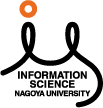Comprehensive List of Researchers "Information Knowledge"
Center for Embedded Computing Systems
- Name
- HONDA, Shinya
- Group
- Title
- Associate Professor
- Degree
- Dr. of Engineering
- Research Field
- Embedded systems / Operating systems / Multiprocessor

Current Research
RTOS and Codesign Toolkit for Multiprocessor Embedded Systems
OUTLINERecently, multiprocessor designs have become popular in embedded computing systems and are embedded in various machines and equipment to control them because increasing the number of processors is generally more power/performance efficient than increasing the clock frequency. Specifically, multiprocessor systems-on-chip (MPSoCs) are considered a promising solution to achieve both high-performance and low-power consumption and will be used in a wide range of embedded systems in the future.
TOPICS
(1) RTOS for Multiprocessors
On the software side, real-time operating systems (RTOSs) have become commodity tools to manage the growing complexity of embedded software. In the development of embedded software running on MPSoCs, RTOSs for MPSoCs are necessary.
From the viewpoint of RTOSs, there are different types of multiprocessor (MP) systems such as symmetric multiprocessor (SMP) systems, functionally distributed multiprocessor (FDMP) systems, and so on. Among them, FDMP architecture is an appropriate choice for embedded systems where application programs are fixed. We have developed a RTOS for FDMP-type and SMP-type embedded systems.
(2) Codesign Toolkit for Multiprocessor
In the design of embedded multiprocessor systems, one crucial decision is mapping application processes onto processors. Recent advances in EDA technologies, specifically hardware/software codesign and C-based behavioral synthesis, further enables smooth mapping of applications not only to processors but also to hardware modules. To achieve the best mapping, accurate estimation of design quality such as performance and cost is necessary for each candidate mapping, but this problem is generally very difficult. Alternatively, a designer has to evaluate the quality of mapping very quickly.
For rapid design and evaluation of embedded multiprocessor systems, we developed a system-level design toolkit called SystemBuilder. System design using SystemBuilder starts with system specification in C language. A designer specifies system functionalities as a set of concurrent processes communicating with each other through channels. SystemBuilder provides three primitive communication channels (communication primitives, hereafter). It takes the system specifications and mapping directives as input and generates RTOS-dependent software, synthesizable hardware, and hardware/software interfaces including interface circuits and device drivers. SystemBuilder also supports cosimulation at different abstraction levels and FPGA-based implementation.
FUTURE WORK
In addition to computing the above investigations, we will promote their use in various projects in the Center for Embedded Computing Systems, such as "operating systems for in-vehicle multimedia systems."
.jpg)
Figure:SystemBuilder design flow
Career
- Shinya Honda received his Dr. Eng. degree from Toyohashi University of Technology in 2005.
- From 2005 to 2005, he was a researcher at the Nagoya University Extension Courses for Embedded Software Specialists.
- In 2006, he joined Center for Embedded Computing Systems, Nagoya University, as an Assistant Professor,where he is now an associate professor
Academic Societies
- IEICE
- IPSJ
Publications
- Evaluation of Applying SpecC to the Integrated Design Method of Device Driver and Device, in Embedded Software for SoC, Kluwer Academic Publishers, pp. 137-150, 2003.
- RTOS-Centric Hardware/Software Cosimulator for Embedded System Design, CODES+ISSS, pp. 158-163, 2004.
- RTOS and Codesign Toolkit for Multiprocessor Systems-on-Chip," ASP-DAC, 2007.








